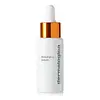What's inside
What's inside
 Key Ingredients
Key Ingredients

 Benefits
Benefits

 Concerns
Concerns

 Ingredients Side-by-side
Ingredients Side-by-side

Water
Skin ConditioningGlycerin
HumectantPropanediol
SolventSodium Ascorbyl Phosphate
AntioxidantAlcohol
AntimicrobialYeast Extract
Skin ConditioningSclerotium Gum
Emulsion StabilisingSodium Levulinate
Skin ConditioningAlcohol Denat.
AntimicrobialNiacinamide
SmoothingSodium Anisate
AntimicrobialXanthan Gum
EmulsifyingZinc PCA
HumectantPotassium Sorbate
PreservativeCitric Acid
BufferingCaprylyl/Capryl Glucoside
CleansingBenzyl Alcohol
PerfumingParfum
MaskingCI 77891
Cosmetic ColorantChlorella Vulgaris/Lupinus Albus Protein Ferment
Skin ConditioningNasturtium Officinale Flower/Leaf Extract
AntiseborrhoeicSodium Hyaluronate
HumectantPhospholipids
Skin ConditioningLeuconostoc/Radish Root Ferment Filtrate
AntimicrobialSodium Benzoate
MaskingActinidia Arguta Fruit Extract
Skin ConditioningLimonene
PerfumingLinalool
PerfumingBenzyl Salicylate
PerfumingCitronellol
PerfumingGeraniol
PerfumingWater, Glycerin, Propanediol, Sodium Ascorbyl Phosphate, Alcohol, Yeast Extract, Sclerotium Gum, Sodium Levulinate, Alcohol Denat., Niacinamide, Sodium Anisate, Xanthan Gum, Zinc PCA, Potassium Sorbate, Citric Acid, Caprylyl/Capryl Glucoside, Benzyl Alcohol, Parfum, CI 77891, Chlorella Vulgaris/Lupinus Albus Protein Ferment, Nasturtium Officinale Flower/Leaf Extract, Sodium Hyaluronate, Phospholipids, Leuconostoc/Radish Root Ferment Filtrate, Sodium Benzoate, Actinidia Arguta Fruit Extract, Limonene, Linalool, Benzyl Salicylate, Citronellol, Geraniol
Water
Skin ConditioningGlycerin
HumectantButylene Glycol
HumectantEthoxydiglycol
HumectantLactic Acid
BufferingSalvia Hispanica Seed Extract
EmollientSodium PCA
HumectantPalmitoyl Tripeptide-5
Skin ConditioningSophora Japonica Flower Extract
Skin ProtectingAscorbyl Methylsilanol Pectinate
AntioxidantSodium Hyaluronate
HumectantTocopherol
AntioxidantDipotassium Glycyrrhizate
HumectantAminopropyl Ascorbyl Phosphate
AntioxidantTrehalose
HumectantPolyacrylate-13
Propanediol
SolventCitrus Grandis Peel Oil
MaskingHelianthus Annuus Seed Oil
EmollientPolyisobutene
Methylpropanediol
SolventCarrageenan
Pentylene Glycol
Skin ConditioningGlyceryl Polyacrylate
Caprylyl Glycol
EmollientEthylhexylglycerin
Skin ConditioningTetrasodium Glutamate Diacetate
Xanthan Gum
EmulsifyingPolysorbate 20
EmulsifyingLimonene
PerfumingSodium Hydroxide
BufferingPhenoxyethanol
PreservativeWater, Glycerin, Butylene Glycol, Ethoxydiglycol, Lactic Acid, Salvia Hispanica Seed Extract, Sodium PCA, Palmitoyl Tripeptide-5, Sophora Japonica Flower Extract, Ascorbyl Methylsilanol Pectinate, Sodium Hyaluronate, Tocopherol, Dipotassium Glycyrrhizate, Aminopropyl Ascorbyl Phosphate, Trehalose, Polyacrylate-13, Propanediol, Citrus Grandis Peel Oil, Helianthus Annuus Seed Oil, Polyisobutene, Methylpropanediol, Carrageenan, Pentylene Glycol, Glyceryl Polyacrylate, Caprylyl Glycol, Ethylhexylglycerin, Tetrasodium Glutamate Diacetate, Xanthan Gum, Polysorbate 20, Limonene, Sodium Hydroxide, Phenoxyethanol
 Reviews
Reviews

Ingredients Explained
These ingredients are found in both products.
Ingredients higher up in an ingredient list are typically present in a larger amount.
Glycerin is already naturally found in your skin. It helps moisturize and protect your skin.
A study from 2016 found glycerin to be more effective as a humectant than AHAs and hyaluronic acid.
As a humectant, it helps the skin stay hydrated by pulling moisture to your skin. The low molecular weight of glycerin allows it to pull moisture into the deeper layers of your skin.
Hydrated skin improves your skin barrier; Your skin barrier helps protect against irritants and bacteria.
Glycerin has also been found to have antimicrobial and antiviral properties. Due to these properties, glycerin is often used in wound and burn treatments.
In cosmetics, glycerin is usually derived from plants such as soybean or palm. However, it can also be sourced from animals, such as tallow or animal fat.
This ingredient is organic, colorless, odorless, and non-toxic.
Glycerin is the name for this ingredient in American English. British English uses Glycerol/Glycerine.
Learn more about GlycerinLimonene is a fragrance that adds scent and taste to a formulation.
It's found in the peel oil of citrus fruits and other plants such as lavender and eucalyptus. The scent of limonene is generally described as "sweet citrus".
Limonene acts as an antioxidant, meaning it helps neutralize free radicals.
When exposed to air, oxidized limonene may sensitize the skin. Because of this, limonene is often avoided by people with sensitive skin.
The term 'fragrance' is not regulated in many countries. In many cases, it is up to the brand to define this term. For instance, many brands choose to label themselves as "fragrance-free" because they are not using synthetic fragrances. However, their products may still contain ingredients such as essential oils that are considered a fragrance.
Learn more about LimonenePropanediol is an all-star ingredient. It softens, hydrates, and smooths the skin.
It’s often used to:
Propanediol is not likely to cause sensitivity and considered safe to use. It is derived from corn or petroleum with a clear color and no scent.
Learn more about PropanediolSodium Hyaluronate is hyaluronic acid's salt form. It is commonly derived from the sodium salt of hyaluronic acid.
Like hyaluronic acid, it is great at holding water and acts as a humectant. This makes it a great skin hydrating ingredient.
Sodium Hyaluronate is naturally occurring in our bodies and is mostly found in eye fluid and joints.
These are some other common types of Hyaluronic Acid:
Learn more about Sodium HyaluronateWater. It's the most common cosmetic ingredient of all. You'll usually see it at the top of ingredient lists, meaning that it makes up the largest part of the product.
So why is it so popular? Water most often acts as a solvent - this means that it helps dissolve other ingredients into the formulation.
You'll also recognize water as that liquid we all need to stay alive. If you see this, drink a glass of water. Stay hydrated!
Learn more about WaterXanthan gum is used as a stabilizer and thickener within cosmetic products. It helps give products a sticky, thick feeling - preventing them from being too runny.
On the technical side of things, xanthan gum is a polysaccharide - a combination consisting of multiple sugar molecules bonded together.
Xanthan gum is a pretty common and great ingredient. It is a natural, non-toxic, non-irritating ingredient that is also commonly used in food products.
Learn more about Xanthan Gum